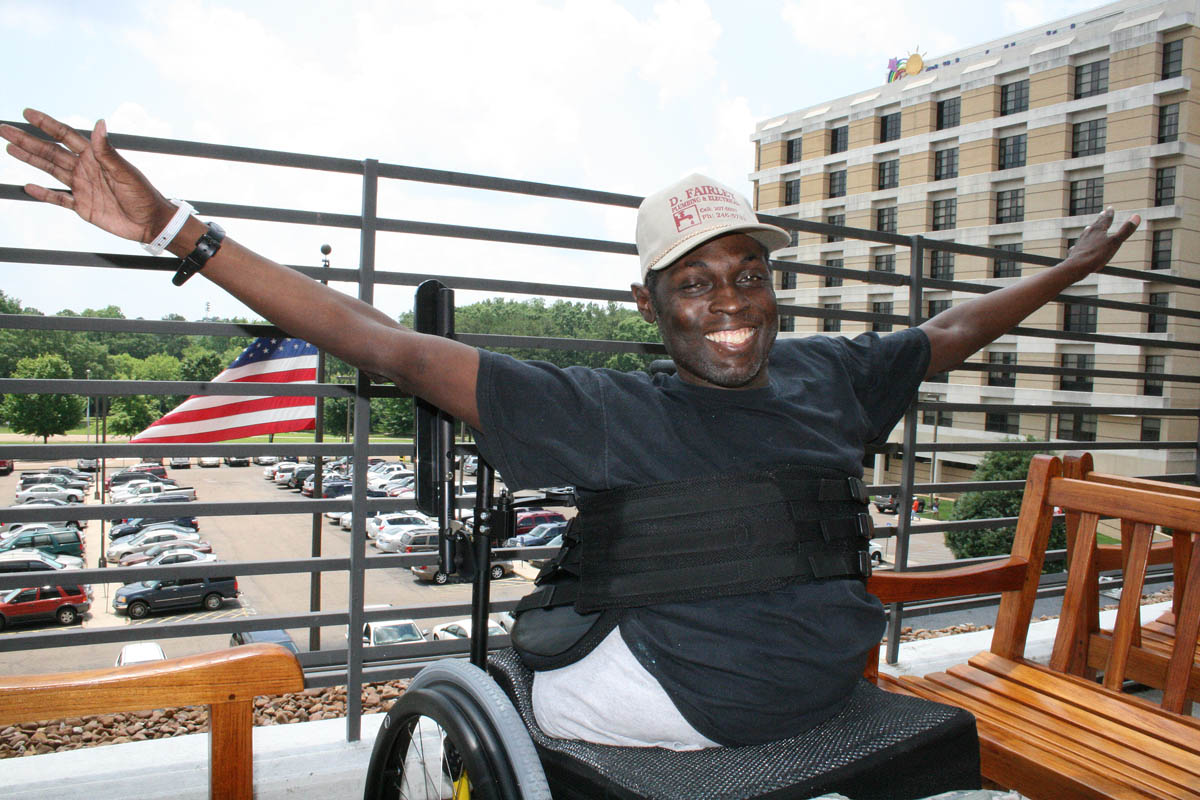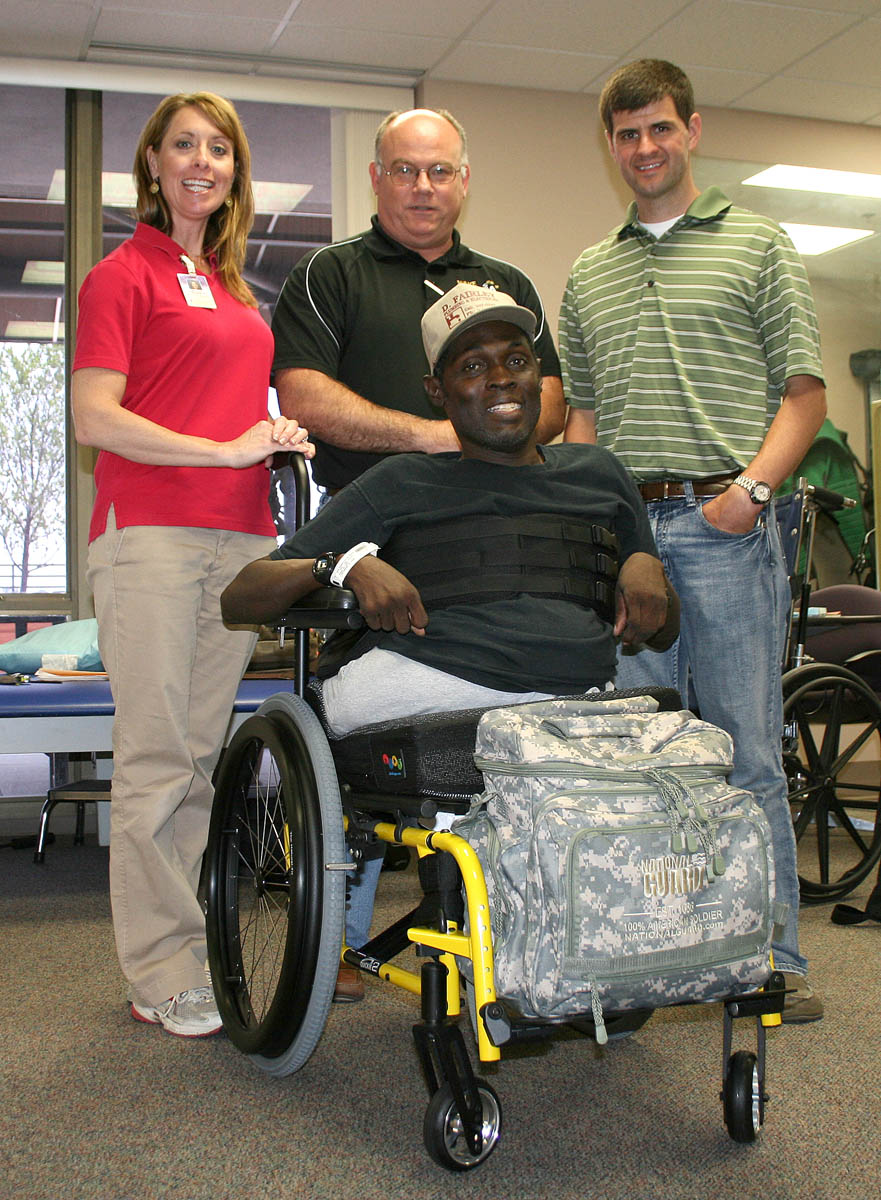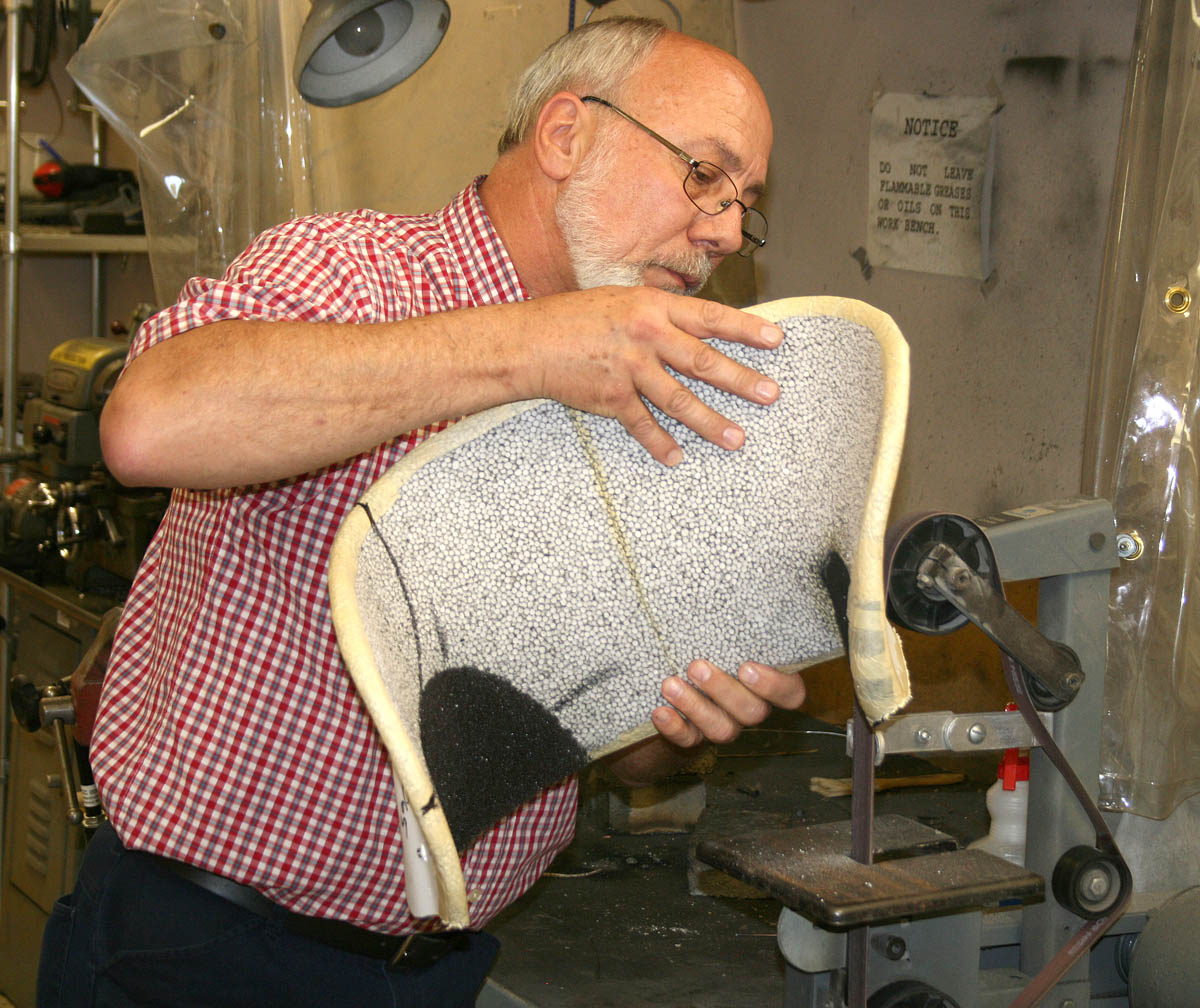At Methodist Rehabilitation Center’s Assistive Technology Clinic, physical therapist Allison Fracchia of Jackson does whatever it takes to fit patients with disabilities with the best equipment for their needs.
She even went back to the classroom to help 51-year-old Dean Whitehead of Indianola.
When his unique posture cried out for a wheelchair with custom-molded seating, she got the certification necessary to design and recommend a custom system known as Ride Designs.
“We could have put him in something else, but to me, the outcome would not have been what it needed to be,” Fracchia said.
“We take our time and don’t recommend something simply because it would be the quickest thing to do. Sometimes it’s worth the wait, and in Dean’s case it definitely was.”
An accidental gunshot wound left Whitehead a paraplegic at age 11. Then, infected pressure sores in his 20s and 30s led to amputations of his legs and hip region.
The nature of his injuries caused Whitehead to lean to the left. This resulted in many postural problems that affected his functional use of a standard style wheelchair without custom seating.
“It was really labor intensive and slow for Dean to get from one place to another,” Fracchia said. “His balance was severely affected when seated in his chair.”
Whitehead, who began using a wheelchair in the early 1970s, said he’s amazed at the advances now available for people with disabilities.
“Technology changed so much in the last 25 to 30 years that there are things you couldn’t have dreamed about that are a reality today,” he said.
Even so, Fracchia believes some of his issues could have been avoided.
“If he had been properly seated in a wheelchair and had been provided with a pressure redistribution and positioning cushion, his chances of developing all of the secondary complications would have been minimized greatly,” Fracchia said.
When Will Mattern of Flowood’s A&A Home Health Equipment began working with Whitehead, he immediately consulted Fracchia, who is one of but a few certified assistive technology practitioners and the only practicing physical therapist that holds a Seating and Mobility Specialist certification in the state.
“I knew over at Methodist Rehab we had more options,” Mattern said. “There was more equipment for him to try, and we could test different pieces to make sure we would get what was appropriate for him.”
Mattern worked closely with Fracchia to build a custom chair to suit Whitehead’s lifestyle. One priority was to lighten the load for Whitehead’s mother, who is his primary caregiver and was having more difficulty lifting his chair in and out of a vehicle.
“There are people like Dean who have been dependent on their parents for care their entire lives,” Fracchia said. “They are living longer, but in turn, their caregivers are aging and have developed their own medical problems."
Fracchia says the clinic always considers both the goals of the caregiver as well as the wheelchair user when making recommendations. “Funding often limits our choices,” she said. “Nevertheless, these things should be considered.”
Whitehead’s new wheelchair is an ultra lightweight frame. Everything from the wheelchair’s depth, width, height from the floor and angle of the tires was precisely calculated to accommodate his mobility and positioning needs.
To avoid the wheelchair tipping over—a common problem for people who have lost both legs—they devised a clever way to use his favorite camouflage backpack as a counterweight on the front of the chair. This assisted with providing a “balanced” system when Whitehead was seated.
Addressing his severe, left-side lateral lean proved more problematic. “We noticed that no off-the-shelf seating product was going to work for him,” Mattern said. “Allison and I while working together had seen the Ride Design seating system, and we felt that was going to be the best piece of equipment for him.”
When they learned Ride Design required a special certification to recommend the system, A&A Medical arranged for a company representative to fly from Colorado to conduct a class. And Whitehead was invited to be an active participant.
With all of these elements, they were able to construct a chair that was lightweight for independent mobility, while achieving maximum support for proper stability.
The entire process—from his initial evaluation on Oct. 31, 2011 to getting his new chair—took nearly six months. “We told Dean that if he was willing to work with us, it may take up to a year to get everything done,” Fracchia said. “He said it was worth the wait for him.”
He had to wait for one more last-minute adjustment when he came to get his chair on May 7. The back of his custom seat cushion was just about an inch too high for comfort, so Fracchia enlisted the help of Methodist Rehab’s in-house biomedical team.
“We’re able to help out when they’re having difficulties getting a chair just right,” said biomedical technician Greg Lauten. “We have the tools here to do it, and we’re glad to help get our patients happy and comfortable.”
Lauten used a saw and a belt sander to fix the problem, and Whitehead’s chair was soon good to go.
The difference the new chair made was immediately apparent.
"I think it is life-changing,” Fracchia said. “I don’t know how long it’s been since he was able to hold both arms in the air and still maintain his position in the chair without falling over. He’s now able to use both arms simultaneously to maneuver his wheelchair.”
Whitehead says he was awed by the dedication to helping him.
“It was really something,” Whitehead said. “So many people were involved. I couldn’t believe the time and the effort they put into something like this.”



